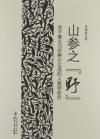
Sun Xiaoshu 孙晓舒
Beijing: The Intellectual Property Publishing House, 2013
Reviewed by Fang Jingwen (Doctoral Candidate, Renmin University of China; Visiting Fellow at Harvard-Yenching Institute)
This is an interesting book by a young Chinese anthropologist. The subject — northeast wild ginseng — embodies rich cultural meaning in China, both in the Qing Dynasty and in contemporary days. Inspired by Arjun Appadurai’s study on the anthropology of things, the author depicts the entire “social life” of the northeast wild ginseng. It is first grown in a small village located at Fushun, Liaoning Province; then appears and is distributed in a medical ingredients market at Anguo, Hebei Province; and finally arrives at its consumption destination in Hangzhou, Zhejiang Province. At different stages and geographic locations, northeast wild ginseng is perceived and constructed in different terms: First as a ‘thing’, then as a ‘commodity’, and finally as a ‘nutritious gift’. Moreover, while in the Qing Dynasty the construction of meaning mainly lied in the production and consumption stages, nowadays it has turned to the distribution stage. The shaping forces throughout the “social life” of ginseng come from the dynamic interaction between natural resources, official regulation, non-governmental activities, social needs and market behavior.
Encompassing the entire social life as well as the cultural meanings of wild ginseng from the Northeast, this book is valuable and inspiring in many ways. First, as indicated in the title of the book, the “wild-ness” of the ginseng is emphasized and valued a lot, but in fact, with environmental change caused by industrial production, wild ginseng in the strict sense of the term is hardly found nowadays. Therefore, it has to be made “wild”. This might be a tendency of Chinese culture, which values “naturalness”, but is not hesitant to make “nature” when natural nature is unavailable, as also in the case of bonsai. Second, as for methodology, the historical perspective and the multi-locale fieldwork connects history to the contemporary period and at the same time connects the three different geological locations of production, distribution and consumption, thus presenting a comprehensive and vivid picture of northeast wild ginseng in time and space, endowing the object with life.
